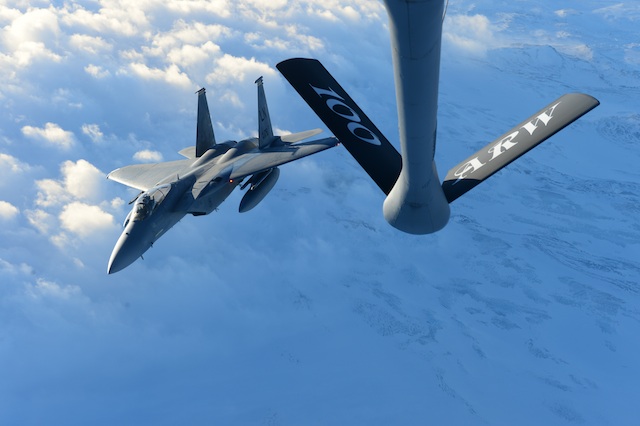Defence spending cuts have left the US Air Force with two options: It can continue flying equipment that will be obsolete in a decade, or it can ground older aircraft and channel savings into new technology.
USAF Chief of Staff Gen. Mark Welsh delivered that message on 27 March during a speech at the Center for Strategic and International Studies in Washington, DC.
“Every decision hurts,” says Welsh. “Everything in our budget this year will result in a combatant commander having less capability, less capacity, less ability to respond [and] less flexibility.”
But the USAF’s decision is clear, according to Welsh.
Modernisation “is not an optional thing for the Air Force,” he says. “You can’t dress up a fourth-generation airplane, a legacy fighter, and make it competitive with an F-35. It can’t be done.”
Welsh used much of his roughly 40min speech to explain the reasoning behind the service’s strategy to invest in new equipment while divesting older platforms like it’s ageing fleet of Fairchild Republic A-10s and Lockheed U-2s.

Fairchild Republic A-10 close-air support aircraft. USAF.
That plan, outlined in a budget proposal released in March, calls for committing billions of dollars to longer-term projects like the long-range strike bomber, the joint surveillance target attack radar system (JSTARS) replacement and the T-X fighter trainer replacement.
The budget proposal, a response to dwindling defense spending, still needs Congressional approval.
“Ten years from now, the older stuff won’t be competitive in the battle space,” he says.
Welsh calls the A-10’s close-air support role more critical to counter-insurgency operations like those in Iraq and Afghanistan than to larger-scale conflicts.
“But that’s not why super powers have air forces,” Welsh says. “[Super powers] have air forces to fight a full-spectrum high-end fight.”
Grounding A-10s is “actually the right choice if you are worried about fighting a large conflict,” he says.
The USAF has also proposed cutting its fleet of Boeing F-15C fighters by 51 aircraft.
That move, Welsh says, will allow the service to afford upgrades to the F-15C’s Raytheon AVG-63(V)3 active electronically-scanned array (AESA) radar.
“The F-15C’s radar needs to be updated or it’s not going to be competitive, even against today’s threats in some scenarios,” Welsh says. “We will upgrade that radar… But we are going to cut the overall fleet because we can’t afford to do both.”

The USAF says it needs to update radars in its McDonnell Douglas F-15C fighters. Here, an F-15C breaks away after refueling over Iceland on 19 November 2013. USAF.
The downsizing outlined in the USAF’s five-year budget comes as the service struggles to maintain operational readiness, which Welsh says has been “slowly declining” for at least 10 or 11 years.
The service already does not meet standing requirements for bomber and fighter squadrons or for intelligence, surveillance and reconnaissance platforms, he adds.
“Our ability to do things as a nation is going to diminish” with more budget cuts,” Welsh warns. The cuts “will actually change our ability to do things around the world.”
Source: FlightGlobal.com



















